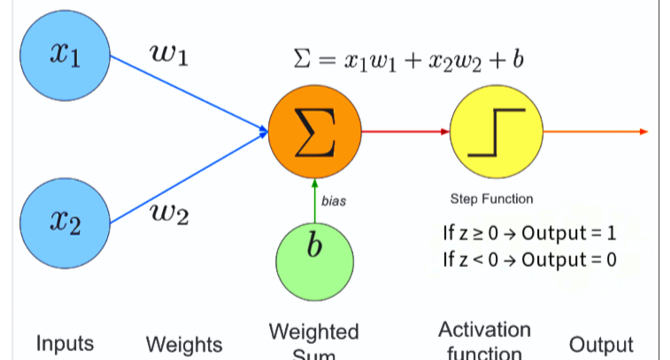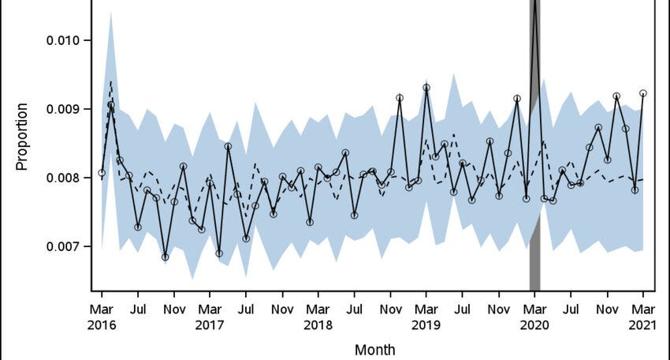Deep Learning News
Medium
295

Grok 3 and the Multimodal Revolution: How AI is Redefining Interaction
- Grok 3 and the multimodal revolution in AI by xAI is transforming interactions by combining text, images, audio, and soon video seamlessly within one system.
- Powered by a Mixture-of-Experts (MoE) model and trained on a massive dataset, Grok 3 can handle various data types like text and images with high efficiency.
- Grok 3's architecture allows it to process data with a 128,000-token context window and features like DeepSearch for real-time insights and Big Brain mode for complex tasks.
- Grok 3 excels in image recognition, creative tasks, and reasoning, outperforming competitors in tasks like math and science with its self-correction mechanisms.
- The DeepSearch mode of Grok 3 pulls real-time data from the web and X, making it a valuable tool for professionals seeking market insights or scientific updates.
- While Grok 3's capabilities are impressive, concerns about biases, privacy, and access limitations exist due to its reliance on user-generated data and premium subscription requirements.
- Future features like voice mode and video analysis are planned, expanding Grok 3's functionality, as the broader trend of multimodal AI continues to evolve with models like Sora, Gemini 2.5, and LLaMA 3.3.
- Grok 3's emphasis on truth-seeking and reasoning distinguishes it from other multimodal models, making it appealing for those seeking more nuanced AI interactions.
- Overall, Grok 3's multimodal capabilities offer opportunities for developers, entrepreneurs, and everyday users to leverage AI in various applications, from customer feedback analysis to lesson plan automation.
- The multimodal wave of AI spearheaded by Grok 3 presents exciting possibilities for users to explore and interact with AI in innovative ways, bridging the gap between humans and machines.
Read Full Article
17 Likes
Medium
55

Image Credit: Medium
How 12 AI Apps Helped Me Earn $500 Weekly
- An individual shared their experience of using 12 AI-powered applications to earn $500 weekly through passive income.
- Accessing a bundle of 12 AI apps for $14.95 allowed the individual to create websites, videos, and mobile apps without prior coding experience.
- Key apps included SiteFlow AI for website creation, AI VideoBooks for animated video creation, and AI AppMaker for mobile app development.
- The user found success in managing and marketing services, generating revenue, and creating subscription services, highlighting the potential of AI applications for various business endeavors.
Read Full Article
3 Likes
Medium
98

Image Credit: Medium
Coding Emotions: From Heart to Sun, with MATLAB
- The author expresses their experience of creating visual poetry using MATLAB by plotting symbols like a heart and a sun.
- They highlight the emotional aspect of coding and the ability of technical tools like MATLAB to serve as a canvas for creative expression.
- The author emphasizes the power of symbolism, geometry, and visual communication in a world dominated by numbers and systems.
- The article is signed by Gianluigi Riccardi and touches upon themes of creativity, engineering design, and visual thinking.
Read Full Article
5 Likes
Medium
417

Image Credit: Medium
8 Science-Backed Signs You're Way More Intelligent Than You Think.
- There are various types of intelligence that one should be able to recognize.
- Some individuals may not realize their own intelligence or smartness.
- Less competent people tend to overestimate their abilities.
- Intelligent individuals wait to consider other viewpoints before forming their own opinions.
Read Full Article
25 Likes
Medium
79

Image Credit: Medium
Artificial Intelligence: The Next Big Shift/ The Beginning of a New Era
- Companies across various sectors are heavily investing in AI tools and solutions, marking the beginning of a new era in technology.
- AI, referred to as the Fourth Industrial Revolution, will bring significant shifts to the job market, creating new roles while rendering some obsolete.
- AI is described as the brain inside smart machines, enabling them to mimic human intelligence, make decisions, understand language, and recognize patterns.
- The AI ecosystem, illustrated using a family tree analogy, highlights the evolving nature of AI technologies like Large Language Models (LLMs) and GPT-4.
Read Full Article
5 Likes
Medium
89

Image Credit: Medium
AI-Powered Video Resolution Technology
- AI-Powered Video Resolution Technology can transform low-quality footage into stunning 4K and beyond.
- Enhance your videos instantly with AI-driven resolution enhancers that upgrade blurry clips to crystal-clear 4K quality.
- AI-powered technology uses advanced algorithms to upscale and enhance footage, achieving high-quality results that mimic professional cameras.
- Aside from resolution enhancement, AI video enhancers also reduce noise, stabilize shaky clips, and provide overall improved video quality.
Read Full Article
5 Likes
Towards Data Science
247

Why Are Convolutional Neural Networks Great For Images?
- The Universal Approximation Theorem states that a neural network with a single hidden layer and a nonlinear activation function can approximate any continuous function.
- Different neural network architectures are developed for various tasks, such as using transformers for natural language processing and convolutional networks for image classification.
- Neural network architectures are inspired by the structure in the data, particularly from a physics perspective that involves symmetry and invariance.
- Convolutional neural networks work well with images by preserving local information through kernels with learnable parameters, reducing the need to flatten all pixels and saving memory and computational resources.
Read Full Article
14 Likes
Medium
94

Image Credit: Medium
How One Tool Helped Me Generate $500 a Day Online
- The AMZ Money Machine tool helped the author generate $500 a day online without the usual hassles of starting an online business.
- The app automates income through Amazon Kindle Publishing, allowing users to earn money with minimal technical skills and setup in under a minute.
- Users of the AMZ Money Machine have collectively earned over $18,000 in the last month, with some individuals making profits exceeding $15,000 in just a few weeks.
- The system simplifies the Amazon Kindle Publishing process using advanced AI technology, ensuring the upload of hot-selling books for passive income opportunities.
Read Full Article
5 Likes
Medium
121

Image Credit: Medium
The Perceptron: The Tiny Brain Cell That Sparked an AI Revolution
- A perceptron is a binary classifier that sorts inputs into two buckets based on weighted sum of inputs and bias.
- The step function of the perceptron outputs 1 if the input (weighted sum plus bias) is non-negative and 0 otherwise.
- The perceptron helps in classifying emails as spam or not spam by calculating the final output (0 or 1) based on the weighted sum of inputs and bias.
- Rosenblatt’s perceptron was the starting point of AI and paved the way for the evolution into neural networks like ChatGPT.
Read Full Article
7 Likes
Medium
13

Image Credit: Medium
Beyond ARMA: Unveiling Mamba, GRU, KAN & GNN for the Future of Time Series Forecasting
- ARMA model serves as the cornerstone for time series forecasting, capturing trends and smoothing out volatility in data.
- Modern forecasting challenges require powerful and flexible models beyond ARMA, such as deep learning architectures like GRU, GNN, KAN, and Mamba.
- Gated Recurrent Unit (GRU) efficiently captures temporal dependencies without complex gating mechanisms of LSTMs.
- Mamba is a breakthrough model for handling long sequences with lower complexity than Transformers, essential for tasks like climate forecasting and health monitoring.
Read Full Article
Like
Medium
422

Image Credit: Medium
How I Started Earning with Coloring Pages: My Journey to $500 in a Week
- Discover how to turn your creativity into income by creating engaging and educational coloring books for kids with the Profitable Coloring Pages PLR Pack.
- The PLR pack includes over 750 unique designs of top-quality artistic coloring pages with educational themes, perfect for combining learning and fun.
- Start your side business or primary source of income with these done-for-you coloring books and potentially earn over $100 per day by selling them on platforms like Amazon KDP and Etsy.
- No special design skills are required as everything is customizable through Canva, and the PLR license allows you to rebrand, edit, and sell the products for all profits. Don't miss out on this limited-time opportunity to start earning from your creative talents!
Read Full Article
25 Likes
Medium
404

Image Credit: Medium
Plain-English Neural Networks (PENN)
- The plain-English neural network (PENN) is a binary classifier expressed as prose, eliminating the need for external calculators.
- In PENN, the weights in traditional deep neural networks are spelled out as sentences, improving explainability.
- The capabilities of the plain-English neural net are limited by the context-window length, similar to the limitation of neurons in deep neural networks.
- PENN allows for each weight to be self-documented, providing reasons for predictions and enhancing understanding.
Read Full Article
24 Likes
Medium
76

Image Credit: Medium
Fractal Flux: A Universal Law of Intelligence, Evolution, and Recursive Reality
- Fractal Flux introduces a universal law governing intelligence, creativity, and complex systems through recursive adaptation and self-referential feedback.
- It diverges from linear causality models by incorporating retrocausal feedback and time-spiral cognition.
- Bootstrap Time Spiral theory suggests complexity emerges from recursive learning loops, enabling systems to evolve autonomously.
- Fractal Flux principles include Bootstrap Causality, Fractal Feedback, and Time-Spiral Cognition for self-generating systems.
- A Python model showcases the implementation of Fractal Flux theory with spiraling dynamics and self-similarity.
- Applications span AGI architecture, creative systems, social evolution, ethics, and cosmology, highlighting adaptive and self-correcting frameworks.
- Key simulation results demonstrate controlled chaos, layered complexity, critical thresholds, and quasi-periodic attractors.
- Fractal Flux embodies a reality model where systems evolve without origins, based on learning from projected futures and recursive adaptation.
- The article delves into the code and math behind simulating the Bootstrap Time Spiral for dynamic recursive evolution.
- The Python implementation illustrates the evolution of a system through spiraling feedback, complexity injection, and quasi-periodic motion.
Read Full Article
4 Likes
Medium
62

Image Credit: Medium
NLP isn’t about replacing humans
- Natural Language Processing (NLP) is the technology behind voice assistants like Google and Alexa.
- NLP processes and interprets human language to understand intent and respond appropriately.
- NLP involves stages like tokenization, part-of-speech tagging, named entity recognition, intent detection, and text generation.
- NLP is used in various applications, such as Google Translate, grammar correction tools, customer chatbots, and medical transcription.
Read Full Article
3 Likes
Medium
121

Image Credit: Medium
Attention Is All You Need — A Structured, Simplified Summary
- The paper “Attention Is All You Need” introduces the Transformer, a breakthrough architecture designed for sequence-to-sequence tasks.
- The Transformer completely removes recurrence and convolution, relying entirely on self-attention mechanisms to model word relationships.
- The architecture is built around an encoder-decoder structure, with attention-based layers replacing RNNs and convolutions.
- The Transformer's simple and efficient design has become the foundation for big AI models like GPT, BERT, and T5.
Read Full Article
7 Likes
For uninterrupted reading, download the app